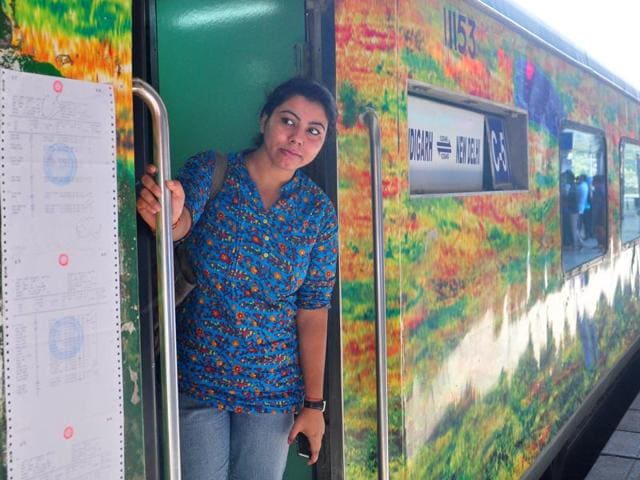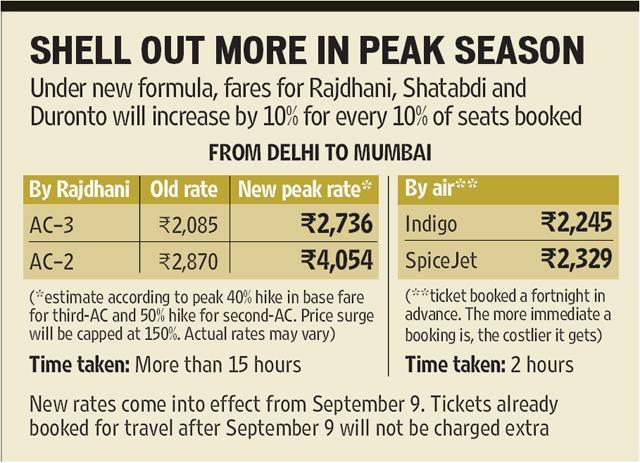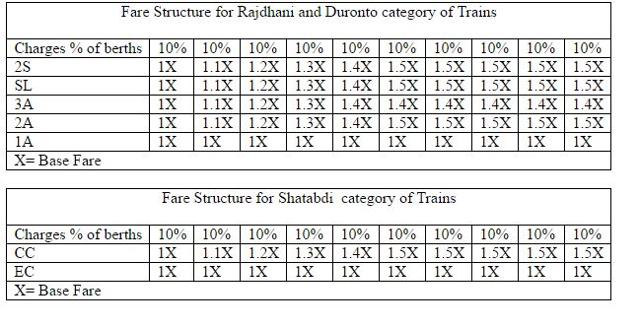Surge-pricing introduced, fares of premier Rajdhani, Duronto, Shatabdi to go up
Indian Railways on Wednesday said that it will introduce flexi fare pricing in its Rajdhani, Duranto and Shatabdi trains from September 9.
You may soon have to shell out more money for a 15-hour Delhi-Mumbai train journey than a two-hour flight.

Starting this Friday, passenger fares of the premier Rajdhani, Shatabdi and Duronto trains have been hiked by a maximum of 50%.
Under the government’s new formula, base fares will jump by 10% for every 10% berths sold in AC-II and AC-III compartments on these trains, with a cap of 50% hike on the original fare.
So, if the base fare for an AC III journey is Rs 2,000, the maximum a commuter might pay is Rs 3,000.
The Railways run 22 Duronto, 25 Rajdhani and 38 Shatabdi trains between major cities. First AC and executive class are exempt from the new rule.

The decision is likely timed to enable the ailing state transporter to cash in on the festive season when millions go on holidays or back to their home towns and train berths are usually booked many times over.
The Railways carry 23 million people daily but successive governments have backed away from reforms and especially hiking passenger fares, which is a politically sensitive topic.
As a result, the country’s largest employer runs many trains at rock-bottom fares and struggles to balance its books. The Railways currently has an estimated annual loss of Rs 30,000 crore in the passenger segment.

But the new rules may face a stiff challenge from low-cost airlines, many of which have dropped fares in recent months. For example, the maximum fare for a Delhi-Mumbai Rajdhani train is way higher than a ticket for an Indigo or Spicejet flight.
The government also announced higher fare structures for new trains, including the Delhi-Agra Gatiman Express, India’s fastest train.





